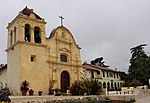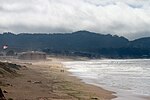Lake El Estero
Landforms of Monterey County, CaliforniaMonterey, CaliforniaMunicipal parks in CaliforniaParks in Monterey County, CaliforniaTourist attractions in Monterey, California ... and 1 more
Tourist attractions in Monterey County, California

Lake El Estero (Spanish: the estuary) is a U-shaped body of water that is the anchor of the El Estero city park in Monterey, California. It is close to Del Monte Beach and Monterey Bay (and the Pacific Ocean). Two bridges connect downtown Monterey with the Oak Grove residential neighborhood and the Naval Postgraduate School. The 24.7-acre (100,000 m2) El Estero park complex has dedicated spaces for recreation with a baseball field, skatepark, and the Dennis the Menace Playground. It is also popular with migrating birds and bird watchers.
Excerpt from the Wikipedia article Lake El Estero (License: CC BY-SA 3.0, Authors, Images).Lake El Estero
Fremont Street, Monterey Del Monte
Geographical coordinates (GPS) Address Nearby Places Show on map
Geographical coordinates (GPS)
| Latitude | Longitude |
|---|---|
| N 36.595 ° | E -121.88527777778 ° |
Address
Fremont Street 808
93940 Monterey, Del Monte
California, United States
Open on Google Maps









